New isn’t always better – especially when it costs more.
Infiniti’s QX80 costs thousands less than its newer-design rivals, models like the Cadillac Escalade and Lincoln Navigator.
But you don’t get less – except where it matters.
And in a number of important ways, you end up with more.
The QX80 is Infiniti’s full-size, three-row SUV – similar in general layout to others in the full-sized luxury SUV class like the Navigator and Escalade. All three of them are based on less-fancy (and less pricey) versions of essentially the same thing, sold by their respective manufacturers’ non-luxury brands. Thus, the Cadillac Escalade is closely related to the Chevy Tahoe; the Lincoln Navigator to the Ford Expedition – and the QX80 to Nissan’s Armada.
There’s also the Lexus LX600, which is closely related to the Toyota Sequoia.
There used to be a wider gulf in terms of features and amenities between the luxury-branded version of these models and their non-luxury brand siblings, but it has narrowed considerably – with the main difference nowadays being the luxury brand dealer probably has a nicer waiting room with a Keurig coffee machine instead of a Mr. Coffee. 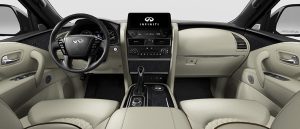
The main difference between the QX and its luxury-branded competitors is it’s a much older design, dating back all the way to the 2011 model year. That’s also one reason why it still comes standard with a big V8 engine rather than a small turbocharged V6 (as in the Navigator and LX600).
The Cadillac Escalade still has a standard V8 – but it also comes standard with a $79,295 base price.
As opposed to $72,700 for the QX80 Luxe.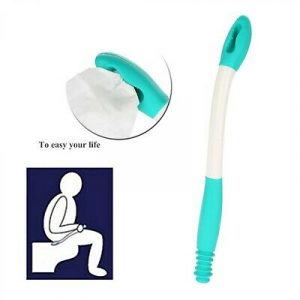
You might also like paying less to not get a smartphone-emulating LCD instrument cluster, which both the newer-design Escalade and Navigator both come standard with. As well as the very latest in “advanced driver assistance technology,” which the Q hasn’t got as much of because back in 2011, when it was designed, the presumption still was that most drivers knew how to drive without needing “assistance.”
A top-of-the-line Q Sensory with 4WD, a 17 speaker premium audio system, rear seat entertainment screens and Infiniti’s Hydraulic Body Motion Control stickers for $87,540. Comparably equipped/top-of-the-line versions of the Escalade and Navigator are priced well into the six figures.
Of course, they do come standard with all the very latest “advanced driver assistance” technologies, too.
What’s New for 2023
Very little – and not since 2011 – which is very good, if you prefer your next new vehicle to be like the way they used to make ’em. With zero miles on the clock – and a new vehicle warranty.
What’s Good
Rugged V8 is standard and uses only a bit more gas than more “modern” (and smaller) V6s with turbos, as in rival Navigator.
It still has gauges, which sets it apart from LCD flatscreen everything else.
Tows more than most and almost as much as the ones that tow just slightly more.
What’s Not So Good
A little less room for cargo behind third row (when in use) than others in the class.
Rival Escalade’s standard V8 is bigger – and stronger.
You may not have much time left to get one. An “all-new” QX is expected to arrive this fall. Probably with a flatscreen’d dashboard and possibly with a turbo V6 instead of a standard V8.
The QX comes standard with a 5.6 liter, 400 horsepower V8, regardless of trim. It’s paired with a seven speed automatic that features rev-matching downshifts (as in the Nissan Z sports car) and rear or four-wheel-drive. Real four-wheel-drive, with a two-speed transfer case and Low range gearing.
Not all-wheel-drive sold as “4WD.”
The standard 8,500 lb. towing capacity is one of the highest in the class, bested only slightly by the Lincoln Navigator’s 8,700 lb. standard towing capacity. The Nav’s standard 3.5 liter V6 also makes more standard horsepower (440) but doesn’t use appreciably less gas. It rates 17 city, 23 highway – vs. 14 city, 20 highway for the Q. These “savings” also come at the cost of paying about $5k more for the Navigator, the difference in price between the $72,700 to start Q and the $77,635 to start Lincoln.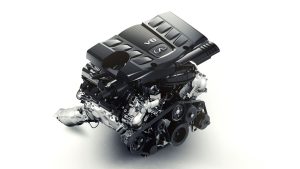
There’s also the potential cost – of the eventual failure of the twin-turbos (and related peripherals) that come with the V6 – to consider. That little engine (for the size of the Navigator) is under a lot of pressure.
The Q’s appropriate-size V8 isn’t and for that reason is probably a safer bet for the long (and post-warranty) haul.
The Cadillac Escalade comes standard with the biggest V8 in the class – 6.2 liters and 420 horsepower. It does not need a turbo to make that power, either. But it does need a lot of gas: 14 city, 19 highway. And the Caddy’s base price &$79,295) is also about $7k higher than the Q’s.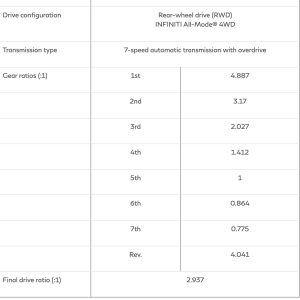
Interestingly – it doesn’t pull as much. The Caddy’s standard max tow rating – 7,700 lbs. – is 1,000 lbs. less than the Qs.
There must be a reason for that – and it’s not horsepower. Which makes you wonder what else it might be. Maybe the Cadillac’s frame isn’t as strong as the Qs? Whatever it is, the fact remains that the Caddy’s standard tow rating isn’t much for such a big (and big-engined) SUV.
The Q’s V8 is a high-performance (and high compression) V8, so it wants to be fed premium unleaded. The same is true of the Caddy’s V8.
Interestingly, the Lincoln’s twin-turbo’d V6 is designed to run best on regular – notwithstanding it’s under boost.
You may have read that Nissan-Infiniti vehicles aren’t selling that well. And it’s true. With the exception of the Q. And that’s very interesting, given how old it is. It is of a piece with the still-selling-well Dodge Charger and Challenger, which are both just as old in terms of not having been updated significantly since circa 2011.
Yet people still want them.
Why?
Well, because they aren’t new – in terms of certain features that have become standard in newer-design vehicles. The big V8 that’s standard is a draw, obviously. People who like big SUVs like big V8s – and there is no market-based reason for their replacement with smaller engines augmented by turbos and electric motors/battery packs (i.e., hybrid drivetrains). As noted above, there’s very little gas mileage gain and while there is a power gain, it is offset by the cost. But it’s a cost being imposed on buyers by the government, which is making it (via regulations) very difficult to sell V8s at all, no matter how much buyers want to buy them.
An aspect of this is also interesting in that a big-engined (and thirsty) big-rig like the Q still offers more than 500 miles of highway range – far more range than any electrically powered car. This is appealing to buyers, too. Also the fact that another 500-plus miles of highway range can be put back into the Q’s tank in about five minutes, rather than the 30-45 minutes it takes to recover a partial charge in an electric car.
Or much longer, if you cannot plug into a “fast” charger.
This ties into another aspect worth mentioning. You can use the Q’s power (and performance) as much as you like without having to worry about how much time it’s going to cost you. Floor it and you’ll burn more fuel, of course – but very little time. EVs – which tout their ability to accelerate – are paradoxical in that if you use that ability more than occasionally, it will cost you something more than just gas money. How much is being able to get where you’re headed quickly worth to you?
And what about not being parented?
Here is where the Q stand out vs. otherwise similar rivals like the Escalade and Navigator – which (being newer designs) have pushier “drive assistance technologies,” most of which you can’t opt out of – or even disable. The Q – being older – has fewer and they are less parenting.
But it’s the sound of that big V8 that is the centerpiece of the appeal of the Q. That and the body-on-frame feel of this thing, which feels a lot like the land yacht Americans sedans Americans used to commonly drive, before the government regulated them out of existence as mass-market cars. Big SUVs like the Q are the inheritors of that tradition and loved because they still are what you generally can no longer buy. Even high-end luxury sedans like the current Mercedes S-Class and BMW 7 Series no longer come standard with V8s and some (like the Lexus LS) no longer even offer them.
Here, it’s standard.
And that probably accounts for why the Q – though “old” – still sells.
The Q is a big rig, no doubt. But – you might be surprised – it’s not as big as the land yachts of the ’70s it emulates. At 210.2 inches long, it’s actually about a foot shorter end-to-end than a circa 1973 Buick Electra 225 – which was named that because it stretched 225 inches, end-to-end.
Much of that being hood – and trunk.
It looked impressive but it wasn’t nearly as practical as the shorter – but much roomier – Q. It seats 7-8 in three rows and it has 95.1 cubic feet of space for whatever you need to carry, with the second and third rows folded. With the second and third row in use, you’ve still got 16.6 cubic feet of “trunk” space to use – about the same as you’d have available in a current full-sized sedan such as a Mercedes S or BMW 7.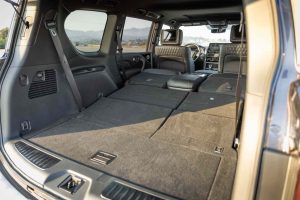
The Navigator and Escalade have even more space (19.3 and 25.5 cubic feet, respectively) behind their third rows and more total space with their second and third rows folded (103.3 and 121 cubic feet, respectively) but if you don’t need the additional space, you can avoid paying thousands more for it.
Something else you can avoid is a digital dashboard.
The Q – being designed before it became the latest thing to put a flat screen in front of every driver’s face – still has analog gauges rather than displays. This does not look “old.” It looks classy. It also looks different from the same-everywhere flat screens that differ mostly in terms of being longer or wider, one vs. another.
Infiniti did add a secondary 12.3 inch LCD screen, which sits on top of the center stack – but the point is it’s secondary.
Another “old” thing you may like is the gear selector, which isn’t a rotary knob or a stalk you tap. It’s a lever you pull back and push forward, a relic of a more tactile time that’s rapidly receding in the rearview.
So also the mechanical parking brake. Most new vehicles have an electronically actuated brake. You depress a switch – rather than push down a pedal, using your foot. The latter being not only more tactile but simpler (being mechanical) and so less apt to fail.
The Rest
The Q is a bargain – relative to its rivals.
It comes standard with a self-leveling suspension, heated leather seats (and steering wheel), three zone climate control and a very good 12 speaker Bose premium audio system – for about $5k less to start than its primary rivals.
Also standard is three years’ worth of free routine service, including tire rotations and oil/filter changes.
However, if you want the upgraded 17 speaker audio system – and the Hydraulic Body Motion Control system, which counters body lean when cornering and thereby lets you corner faster with greater stability – you have to buy the top-of-the line Sensory trim.
An even better deal can be had on the Nissan Armada – which is basically the same SUV as the Q.
For about $20k less to start.
The Bottom Line
Old is only bad when new isn’t necessarily better.
Just “newer” – and more expensive.
. . .
If you like what you’ve found here please consider supporting EPautos.
We depend on you to keep the wheels turning!
Our donate button is here.
If you prefer not to use PayPal, our mailing address is:
EPautos
721 Hummingbird Lane SE
Copper Hill, VA 24079
PS: Get an EPautos magnet or sticker or coaster in return for a $20 or more one-time donation or a $10 or more monthly recurring donation. (Please be sure to tell us you want a magnet or sticker or coaster – and also, provide an address, so we know where to mail the thing!)
My eBook about car buying (new and used) is also available for your favorite price – free! Click here. If that fails, email me at [email protected] and I will send you a copy directly!




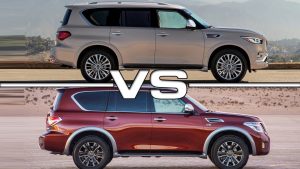
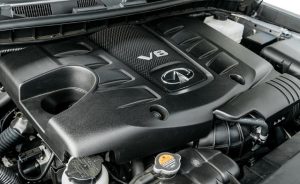
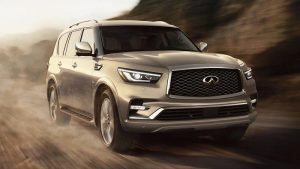
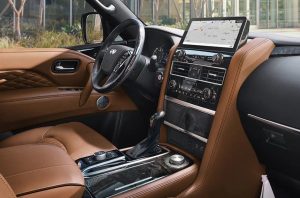








Which makes you wonder what else it might be. Maybe the Cadillac’s frame isn’t as strong as the Qs? Whatever it is, the fact remains that the Caddy’s standard tow rating isn’t much for such a big (and big-engined) SUV.
Maybe it is the weak GM transmission…they have been having problems with their transmissions….
The transmission in the GM Nascar Camaro at Le Mans this year didn’t last 24 hours…..
Hi anon,
From first hand experience the Escalade’s weakness is its engine. The craftmanship is shoddy. I have done more research on SUVs (foreign and domestic) in the last month than I have over 40 years. The QC on most vehicles today (made after 2021) are pretty loosey goosey. The amount of recalls/complaints are pretty astounding.
Here is what I have opined so far:
1. Cadillac/GM serious engine concerns. A look back at history shows that Caddy engines seem to have persistent bad years…2007, 2008, 2014, 2016, and 2019. I would add 2021-2023 to the list, but I think they are newer and still under warranty. FYI: Most warranty repairs on not reported on CarFax. That seems a bit shady to me.
2. Ford Navigator/Expedition – complaints on transmission issues. It looks like most of their transmissions are made in Mexico.
3. Toyota Sequoia/Lexus RX570/600 – no supply available. The dealerships (at least in my area…200 mile span) have nothing on the lots. I would buy a new Sequoia in a heartbeat if the engine and transmission were both manufactured in Japan and they stopped charging above MSRP.
4. Kia and Hyundai…nope, nope, nope. Recall after recall. I was intrigued by the Genesis, but I am hesitant about buying a “luxury” Hyundai.
5. Volkswagen Atlas – engine made in Germany and transmission made in Japan. Engine has complaints on shutting down while driving.
6. Porsche Cayenne – A little smaller than what I want and I have yet to see one make it to 100K miles.
7. Mercedes GLS 450 – beautiful SUV, owners rave about the engine, but availability is slim to non existent.
8. Surprisingly (and I haven’t ruled one out yet) is the Dodge Durango Citadel or are R/T with hemi motor. Absolutely no customer complaints on CarComplaints.com for the years 2022 or 2023. My only concern is the made in Mexico engine. Maybe Dodge is handling QC a bit better than their competitors.
It looks like most SUV IC engines are going to start sliding into oblivion beginning with the 2025 make/models which is why I would love to get my hands on a reliable one that I can drive another 20 years. So far my success rate sucks.
We specifically purchased our 2019 QX80 because we could turn off all of the driver “assist” features one time and they stayed off forever.
Anon
This idea of a new model of an old design is growing on me.